Have you ever wondered where the speedy and elusive roadrunner makes its home?
These fascinating birds, true to their rugged, free-spirited nature, select their nesting locations with great care in the arid landscapes of the Southwestern United States. For roadrunners, the nest isn’t just a place to raise their young but a fortress carefully situated in the challenging desert environment. These adaptable creatures demonstrate exceptional resilience and intelligence in their habitat choice, ensuring their survival in some of the harshest conditions.
Moreover, the roadrunner is an excellent example of the intriguing lives of animals adapting to their environment, painting a vivid picture of survival. Their average height is about 20-24 inches (51-61 cm), and they typically weigh 8-15 ounces (227-425 grams). And adding to their adaptiveness, their coloration is predominantly speckles and streaks of brown and tan. This coloring is effective in providing them with camouflage in their natural habitat. They also have a black crest on their heads and can have a streak of blue and red around their eyes.
So, let’s explore where roadrunners nest, their daily habits, when they are most active, and where to find roadrunners.

The Greater Roadrunner is most common in the southwestern part of the United States.
©Dennis W Donohue/Shutterstock.com
The Different Species of Roadrunners
Before we dive into where roadrunners nest, let’s quickly cover the different species and subspecies of roadrunners.
Roadrunners are iconic birds of the American Southwest. They possess a unique blend of characteristics that makes them quite fascinating. These birds, fast and intelligent, inhabit a variety of ecosystems. Yet, how many roadrunner species exist today in the United States and around the world?
There Are Two Species of Roadrunners
There are two recognized species of roadrunners within the genus Geococcyx: the Greater Roadrunner (Geococcyx californianus) and the Lesser Roadrunner (Geococcyx velox). The Greater Roadrunner is primarily found in the southwestern United States and Mexico, while the Lesser Roadrunner inhabits Central America.
There Are Four Subspecies Between the Greater Roadrunner and the Lesser Roadrunner
Digging further into the subspecies level, the Greater Roadrunner boasts two recognized subspecies. The subspecies include the Geococcyx californianus californianus and Geococcyx californianus constrictus. The former, as the name implies, predominantly inhabit California and parts of other southwestern states. Texas and Mexico are the primary locations of the latter.
As for the Lesser Roadrunner, despite being less widespread, it also has two recognized subspecies. The subspecies include the Geococcyx velox velox and Geococcyx velox pallidus. These subspecies differ primarily in their distribution as well. You can find the former in western Mexico and the latter in eastern Mexico and Central America.
Each subspecies and species has adapted to its unique environment, showcasing fascinating variations in behavior, diet, and morphology. For example, the Greater Roadrunner subspecies are larger and more adaptable to arid environments than their Lesser Roadrunner counterparts.
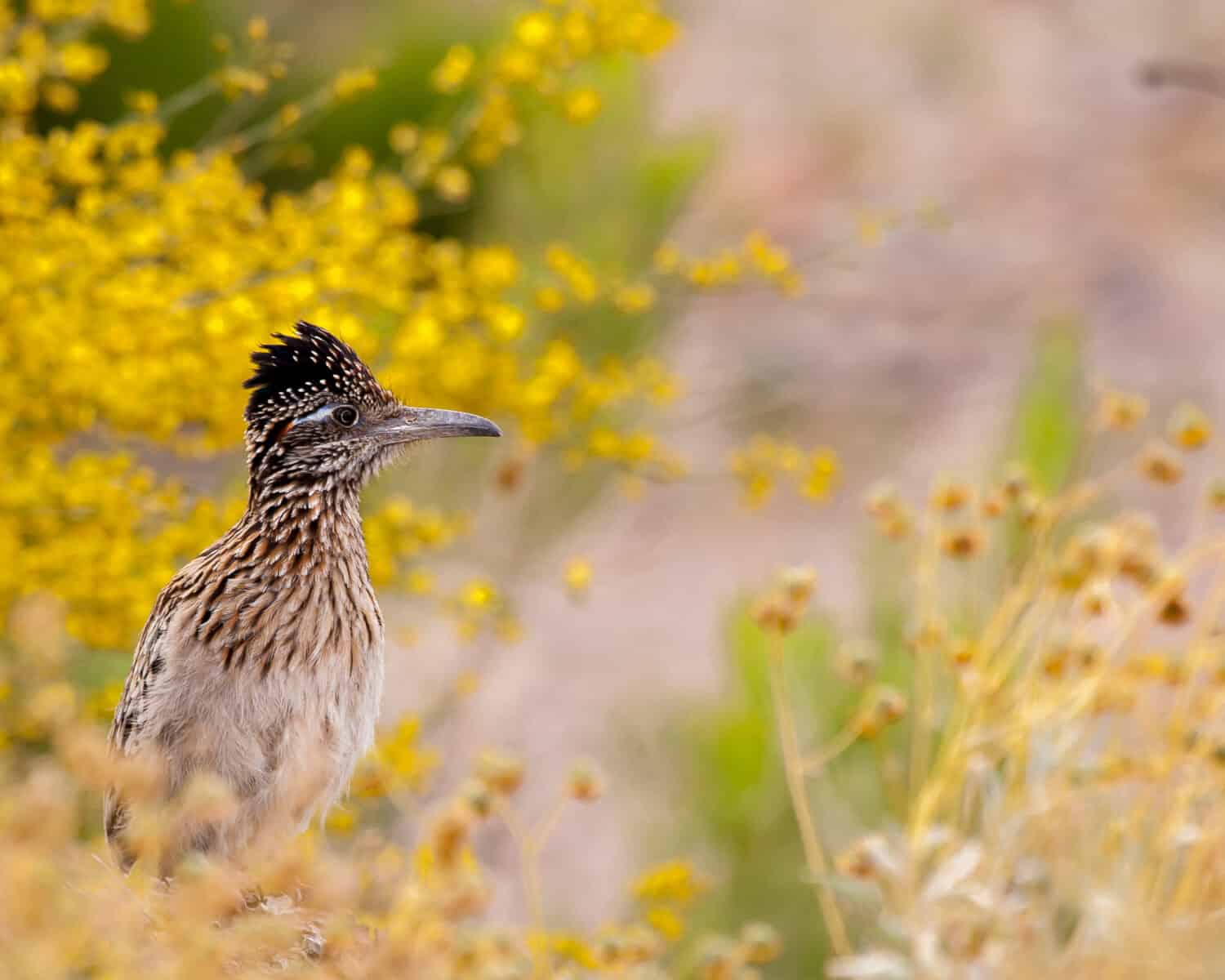
The Greater Roadrunner is the only species of roadrunner found in the United States.
©AZ Outdoor Photography/Shutterstock.com
Roadrunners Nesting Preferences
Roadrunners, masters of the desert, are known for their prowess in running and resilience in the face of arid climates. Yet, even these fast-footed birds need a cozy place to rest their wings and nurture their young. So, what locations do roadrunners prefer when building their nests?
Do Roadrunners Nest in Trees?
Roadrunners can indeed nest in trees but more commonly choose to nest in thorny shrubs and other similar vegetation. When it comes to nesting, they don’t shy away from heights. Despite their reputation for speed on the ground, these adept birds frequently construct nests elevated off the ground. With a height usually between one and three meters high. However, they can occasionally be found as high as seven meters. Not just any tree or shrub will do, however. Roadrunners demonstrate a penchant for certain types of vegetation when it comes to selecting their nest sites.
In their native southwest United States. and Mexico, Greater Roadrunners often favor mesquite, cholla, yucca, and other thorny or spiny desert plants for their nests. These prickly abodes offer a defensive advantage, making it harder for predators to reach their precious eggs or chicks. Interestingly, in environments where such vegetation is sparse, they have been known to utilize the branches of larger shrubs or small trees and even cacti.
It’s also worth noting that the Lesser Roadrunner, inhabiting Mexico and Central America, also prefers thorny vegetation. However, their nests are usually closer to the ground than their Greater Roadrunner counterparts, typically at most two meters high.
Materials Used in Roadrunners Nests
Regardless of the species, roadrunners’ nests are pretty interesting and resourceful. Constructed mainly from twigs, they form a loose, flat platform, sometimes lined with leaves, grass, feathers, or snakeskin. A shallow depression serves as the actual nest cup. What’s more, these birds frequently renovate and reuse old nests, proving that they are also quite efficient.
These birds are also considerably adaptable to their surroundings. They are capable of nesting in different environments ranging from deserts and scrublands to woodlands and urban areas. That said, they do display a preference for open, arid habitats with sparse vegetation. Such environments offer them ample space to roam and hunt and sufficient cover to hide from predators.
Finally, roadrunners are pragmatic and adaptable nesters. They opt for elevated sites within thorny vegetation, primarily in arid, open environments. These nests are not just simple homes. They’re veritable fortresses, providing safety and comfort for the next generation of these remarkable birds. The understanding of their nesting preferences gives us insights into their behavior. It reveals yet another facet of their extraordinary adaptability.
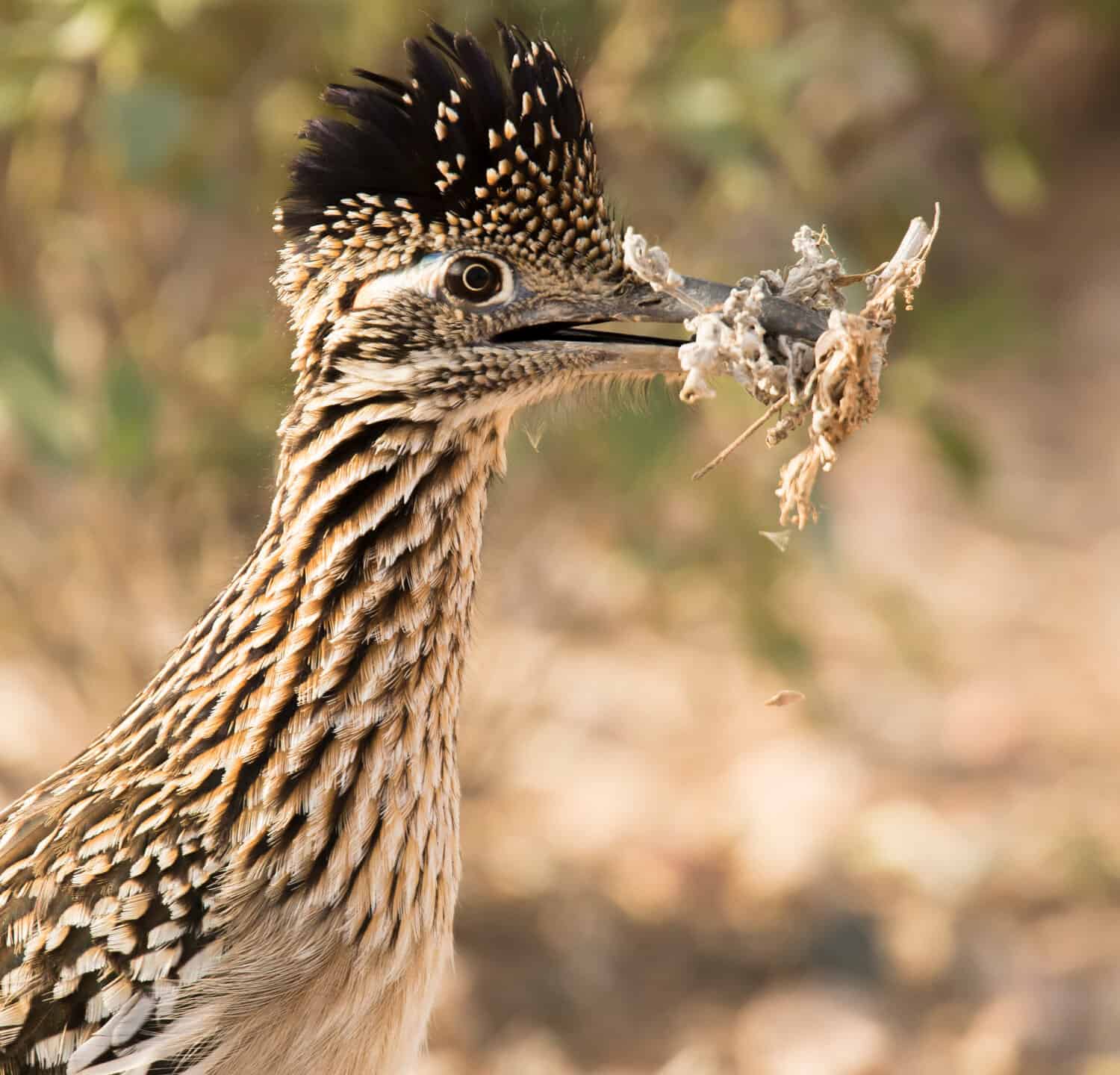
Roadrunners take great care of their nests and often reuse nests or nesting material.
©AZ Outdoor Photography/Shutterstock.com
When Are Roadrunners Most Active During the Day and Throughout the Year?
These exceptional birds are diurnal creatures, meaning they are most active during daylight hours. But when exactly can you expect to witness these feathered sprinters in action?
Early Morning
Generally, roadrunners commence their daily activities shortly after dawn. This activity makes early mornings the prime time for spotting these birds as they engage in feeding and territorial patrol. They predominantly feed on insects, spiders, scorpions, mice, small birds, and even reptiles. Such as lizards and rattlesnakes, demonstrating their position as formidable predators in the desert ecosystem.
Interestingly, you can observe roadrunners basking in the early morning sunlight, orienting their black back feathers towards the sun to absorb heat after the cold desert night. This ability to thermoregulate further emphasizes their adaptability to their harsh environment. As the day heats up, they adjust their behavior to conserve water and avoid overheating. Often seeking shade and reducing their activity levels.
Late Afternoon
Their activity picks up again in the afternoon, peaking before dusk as they prepare for the night. This late afternoon burst of activity often includes foraging, preening, and, during the breeding season, courtship displays. Male roadrunners are known to perform intricate dances, including high-step prancing and movement. They even offer females food or nest material as part of their wooing strategy.
Breeding Season From March Through June
Speaking of the breeding season, this is an exhilarating time to observe roadrunners. The breeding season typically runs from March to June in the southwestern United States. During this time, their activities include nest-building, incubation, and caring for the young. Adding another layer of interest for bird watchers.
Roadrunners Do Not Migrate
However, roadrunners are not migratory birds; their activity can be witnessed year-round, albeit with seasonal variations. For instance, during the colder winter months, these birds may enter a state of torpor. Allowing them to lower their metabolic rate to conserve energy.
To sum up, early mornings and late afternoons are the most promising times of the day to spot roadrunners engaged in their daily activities. These periods are when these lively birds are most likely to be foraging, marking territory, or performing courtship displays. Especially so during their breeding season. Their non-migratory nature also means they can be observed throughout the year, illustrating their robust adaptation to desert life.
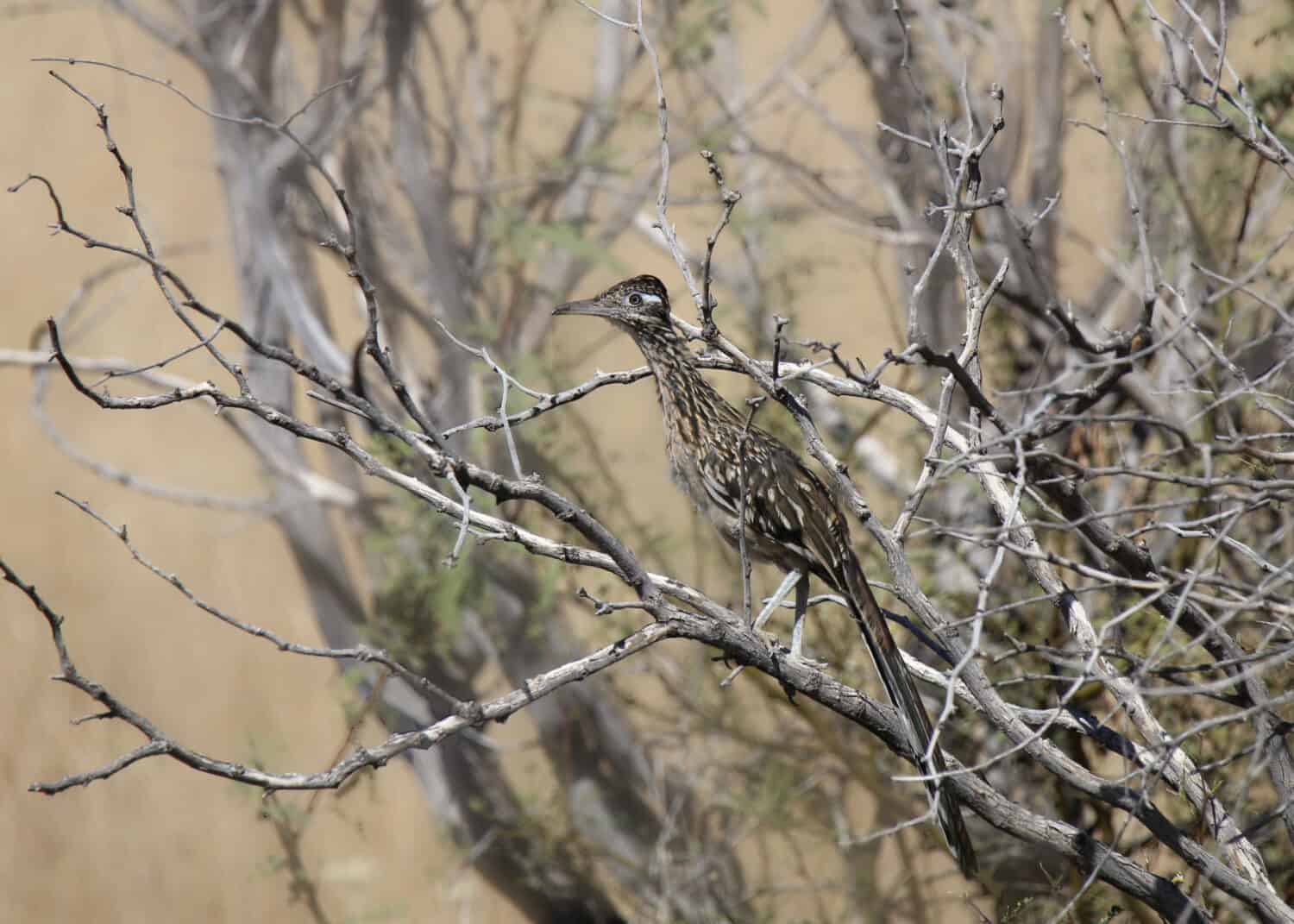
The Greater Roadrunner prefers to nest in thorny shrubs, trees, and similar vegetation. Their height preference is roughly one to even seven meters off the ground.
©vagabond54/Shutterstock.com
Which U.S. States Have the Most Roadrunners?
The Greater Roadrunner, with its two subspecies, is the sole representative of roadrunners in the United States. They are an emblematic feature of the southwestern United States. Roadrunners are indeed a sight to behold with their characteristic long, sleek bodies and stride to match their name. But which U.S. states boast the highest diversity of these fascinating birds?
Of the Greater Roadrunner species, the subspecies Geococcyx californianus californianus, as its name suggests, is found primarily in California. However, it also extends its range across Nevada, Utah, Arizona, and New Mexico. As well as into parts of Colorado, Kansas, Oklahoma, and Louisiana. This subspecies is quite adaptable, thriving in habitats that range from desert and scrubland to woodlands and suburban areas.
The second subspecies, Geococcyx californianus constrictus, is predominantly found in Texas and extends into Oklahoma and Louisiana. It also ranges southwards into Mexico. This subspecies is typically associated with more arid environments and open landscapes.
As such, among U.S. states, it is California, Texas, Arizona, and New Mexico, where you’ll most likely spot roadrunners. Both due to their broader distribution and the favorable habitats these states offer. However, it’s important to note that these states boast the most roadrunners due to the diverse habitats and large geographical areas these states encompass. They offer the arid, open spaces that these birds prefer. Therefore, if you’re keen on observing these fast and fascinating creatures, these are the states to add to your birdwatching journey.
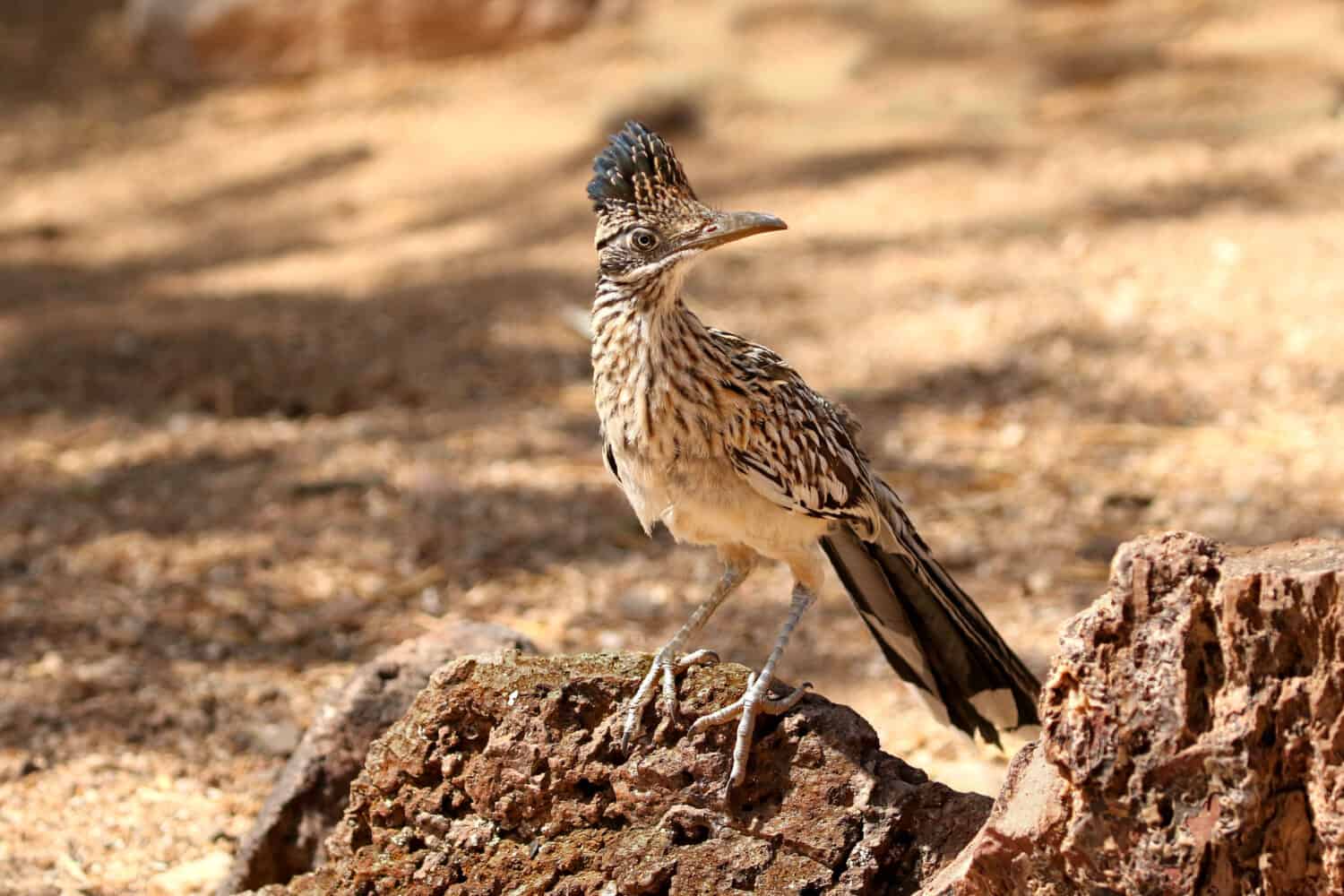
California, Texas, Arizona, and New Mexico are the most common states to encounter a roadrunner.
©J Curtis/Shutterstock.com
The Importance of Roadrunners in the Ecosystem
Roadrunners are not just iconic residents of the American Southwest but also crucial players in the ecosystem they inhabit. From their role as predators to their influence on plant life, these birds significantly contribute to maintaining the health and balance of their environment.
One of the primary ways roadrunners impact their ecosystem is through their diet. Roadrunners are carnivorous birds often seen hunting insects, spiders, scorpions, and small reptiles, including rattlesnakes. By controlling these populations, roadrunners help keep the ecosystem in check, ensuring no one species becomes overly dominant. They also consume small rodents and birds, further enhancing their role as natural pest control agents.
Additionally, roadrunners can play a role in seed dispersal. Although their diet is predominantly carnivorous, they consume fruits and berries, particularly in the winter when other food sources may be scarce. In doing so, they help distribute seeds across their range. Aiding in plant propagation and contributing to plant diversity in their habitats.
Conservation of Roadrunners
Despite their ecological importance, roadrunners face several threats that have led to population declines in certain areas. Habitat loss due to urban development and agriculture, collision with vehicles, and predation by domestic animals are among the primary challenges. Climate change and its associated impacts on their desert habitats pose additional threats to these resilient birds.
Currently, the Greater Roadrunner is not listed as threatened or endangered under the U.S. Endangered Species Act. However, it’s listed as a species of “Least Concern” by the International Union for Conservation of Nature. This status indicates that there are conservation measures in place to monitor its status.
Continued efforts to conserve roadrunner habitats and public education about these fascinating birds can play a significant role in ensuring their survival. Such measures may include protecting their habitats from overdevelopment, creating safe corridors for their movement, and managing domestic pets to minimize predation.
Additionally, citizen science programs involving the public in bird monitoring can contribute to understanding roadrunner populations and their habitat needs. For instance, the Cornell Lab of Ornithology runs several citizen science programs, including Project FeederWatch and eBird, that collect data on bird distribution, including roadrunners.
On the whole, roadrunners are valuable contributors to their ecosystems, playing a crucial role as predators and occasional seed dispersers. As threats to their survival persist, ongoing conservation efforts, habitat protection, and public education are essential to safeguard these iconic birds. As well as the vibrant ecosystems they support.
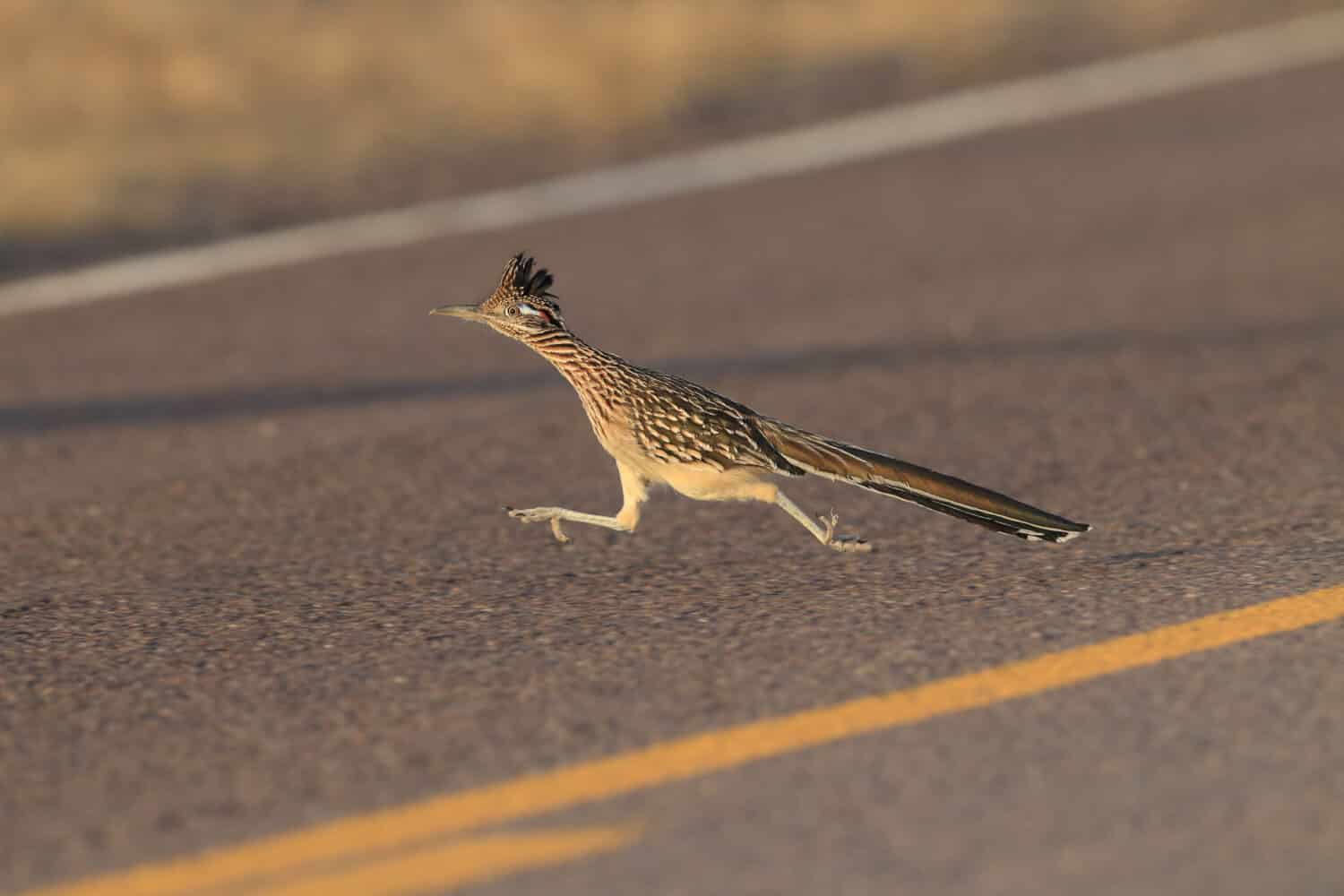
The roadrunner mostly walks and runs on the ground and only flies when necessary.
©Frank Fichtmueller/Shutterstock.com
Conclusion
Roadrunners are an integral part of the desert ecosystem. These captivating creatures are known for their distinct appearance, agility, and adaptability. With only two recognized species, the Greater Roadrunner, in particular, is found across various U.S. states. It is the dominant species in the country, most commonly found in California, Texas, Arizona, and New Mexico.
Roadrunners Follow Consistent Habits and Have Specific Preferences
These birds have a preference for arid, open spaces for nesting. They most often select low-thorny shrubs or cacti for their nests. This location choice provides a certain level of protection against predators. And also allows them the ability to maintain a watchful eye over their surroundings.
Being diurnal creatures, roadrunners are most active during the day, particularly in the early mornings and late afternoons. These periods are when they primarily engage in hunting, territorial marking, and during the breeding season, courtship displays. These birds’ non-migratory nature enables people to observe them throughout the year. Albeit with minor variations in their behavior during the colder winter months.
Roadrunners play a vital role in maintaining the balance of their ecosystem. They are carnivorous birds, primarily feeding on insects, spiders, small reptiles, and other small animals. Their diet significantly aids in controlling these populations. Additionally, their occasional consumption of fruits and berries contributes to seed dispersal, helping plant propagation.
Conservation Efforts
Despite their resilience, roadrunners face numerous threats, including habitat loss, collision with vehicles, predation by domestic pets, and climate change. Although they are not currently listed as endangered, efforts to conserve their habitats, public education, and promoting citizen science programs are necessary to ensure their continued survival.
To conclude, roadrunners are not just fascinating birds to observe; they are critical components of their ecosystems. Continued attention to their conservation and public engagement can help ensure that these iconic birds continue to thrive in their unique desert habitats. As well as offering future generations the joy of seeing a roadrunner sprinting across the Southwestern landscapes.
The photo featured at the top of this post is © Dennis W Donohue/Shutterstock.com
Thank you for reading! Have some feedback for us? Contact the AZ Animals editorial team.






